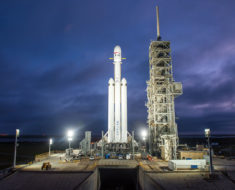We are increasingly living in a technical and technologically advanced world. With science reaching a zenith in terms of its impact on our planet and day-to-day lives, researchers are now taking a step back to really consider the impact of what we are doing. The latest second-look that scientists are analyzing comes in the form of geoengineering. For years, scientists have talked up the possibility of using geoengineering in order to help cool down the earth’s rising temperature, thus preventing some of the impacts of global climate change. However, research undertaken by professionals at the University of Exter are warning that this may not be the right path to take.
One of the biggest and most innovative ideas in the tech world comes to us by way of weather seeding. Weather seeding, or geoengineering as we introduced the concept above, revolves around the idea of spraying special aerosols into the Northern Hemisphere in order to calm down the effects and severity of the slew of hurricanes in the Atlantic Ocean. However, research has now shown that pursuing this same technique in the Southern Hemisphere could turn into something nothing short of catastrophic.
Anthony Jones is one of the lead researchers on the study, which was published in ‘Nature Communications’, and he has become more and more vocal about the potential problems that this geoengineering could lead to. Jones pointed to spraying the Northern Hemisphere during hurricane season and ignoring the Southern Hemisphere and said, “That sounds beneficial after the hurricane season we’ve just had. But if you just inject into the north, you also increase the risk of drought in the Sahel.”
The Sahel is an area in Africa that borders the Sahara Desert. This region is particularly beholden to drought and as a result, more than 15 million people throughout West Africa are medically malnourished. The larger point of Jones’ study is that geoengineering is much like rolling a bunch of dice, you just don’t know what is going to happen to the world at large. Jones said, “Geoengineering regionally and unilaterally could have dire consequences for other parts of the planet.”
Despite the work of Jones and his fellow researchers, geoengineering scientists are still pushing the concept as a last-ditch effort to fight against catastrophic climate change. Jones believes that geoengineering is closer to a painkiller than a problem-solver, insisting that it merely masks the pain of the larger problem.
Dil Bole Oberoi




